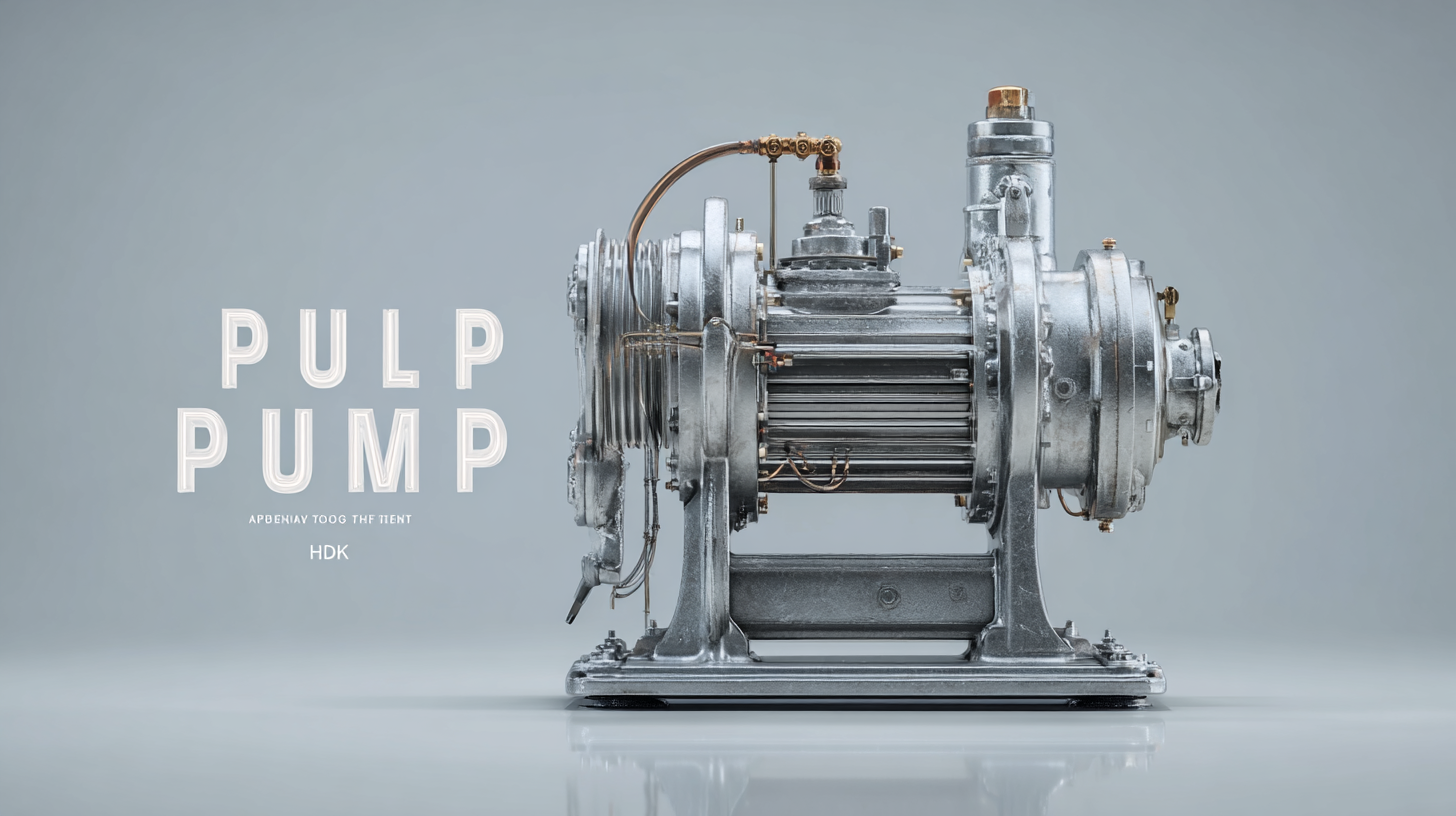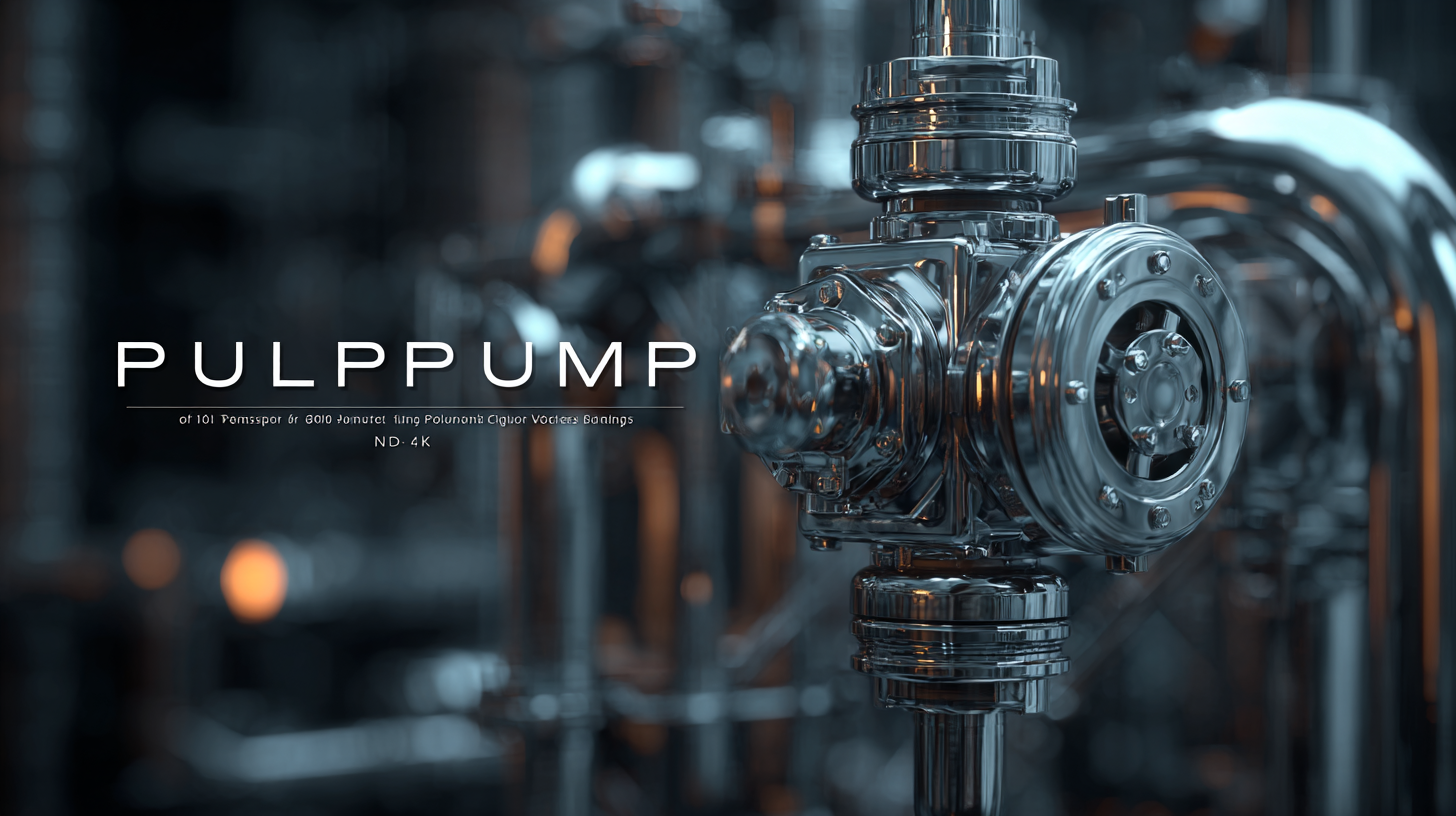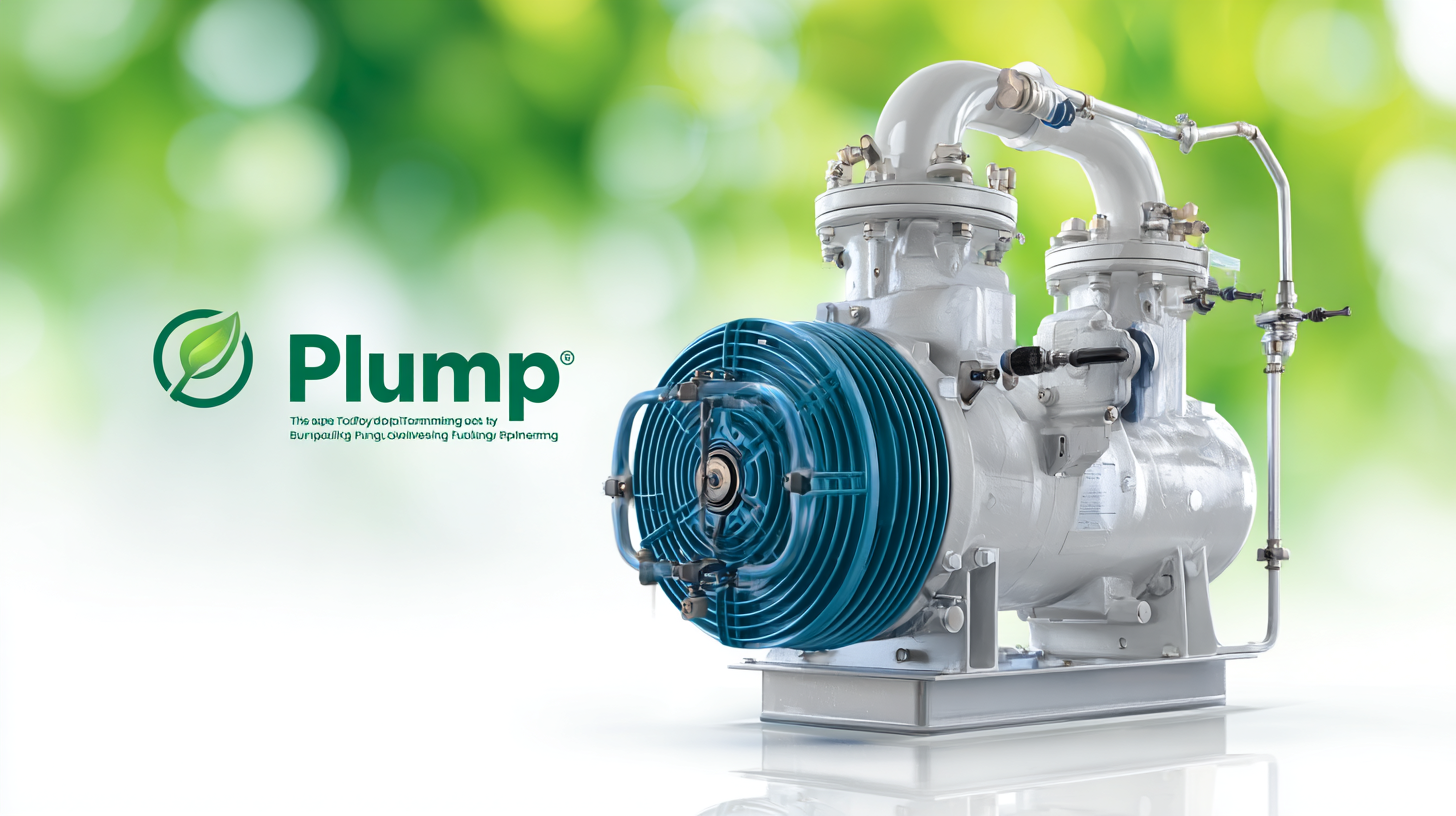

In 2025, the landscape of pulp pump technology is poised for significant transformation, driven by emerging trends that are reshaping the global marketplace. As industries increasingly prioritize efficiency and sustainability, the demand for advanced pulp pump solutions is set to grow exponentially. According to a recent market research report by Valuates Reports, the global pulp pump market is anticipated to reach USD 2.1 billion by 2027, reflecting a compound annual growth rate (CAGR) of 5.6% from 2022. This surge is partially attributed to the rising adoption of automation and smart technologies in manufacturing processes. Furthermore, the Chinese manufacturing sector, highlighted by the motto "Made in China, Earn Respect through Quality", is evolving to meet international standards, showcasing innovations that enhance the performance and reliability of pulp pumps. As we delve into these emerging trends, it becomes clear that understanding the future trajectory of pulp pump technology is crucial for global buyers looking to optimize their operations.

As we look towards 2025, the pulp pump technology landscape is evolving rapidly, but efficiency losses remain a significant challenge. According to a recent report by Smith & Associates, the global pulp and paper industry is projected to face a 15% average efficiency decline in pump operations if current maintenance practices and technology do not improve. This decline is attributed to several factors, including wear and tear of pump components and the increasingly abrasive nature of the pulp mixture being processed.
Furthermore, advancements in pump technology—such as the implementation of smart sensors and AI-driven monitoring systems—are essential to mitigating these efficiency losses. The latest findings from Tech Pulp Analysis suggest that integrating these technologies can lead to a potential efficiency increase of up to 20%. This integration not only minimizes unexpected downtime but also optimizes the energy consumption of pulp pumps, addressing both economic and environmental concerns that are paramount for global buyers.
As we prepare for 2025, the challenge for industry leaders will be to adapt to these emerging technologies while simultaneously tackling the inherent efficiency losses. Collaborating with technology providers to enhance operational efficiency will be crucial in maintaining competitive edges in a rapidly shifting market landscape.
As we look towards 2025, the pulp pump technology landscape is likely to undergo significant transformations driven by material innovation. The introduction of advanced composite materials and specialized alloys promises to enhance the durability and performance of pulp pumps, which are pivotal in the paper and pulp industry. These materials are engineered to withstand the corrosive nature of pulp, significantly reducing wear and tear, thus extending the operational lifespan of the pumps.
Moreover, innovative surface treatments and coatings are becoming increasingly crucial in this sector. By minimizing friction and enhancing resistance to abrasives found in pulp mixtures, these technologies are not only improving the efficiency of pulp pumps but also reducing maintenance costs and downtime. As global buyers seek more reliable and cost-effective solutions, investing in these technologically advanced pulp pumps will likely become a strategic priority, reshaping operational standards and elevating performance benchmarks across the industry.
| Feature | Material Type | Durability Rating (1-10) | Performance Efficiency (%) | Cost ($) |
|---|---|---|---|---|
| High-Temperature Resistance | Carbon Fiber | 9 | 95 | 1200 |
| Chemical Resistance | Polypropylene | 8 | 90 | 800 |
| Lightweight Design | Aluminum Alloy | 7 | 85 | 1000 |
| Wear Resistance | Ceramic Coating | 10 | 92 | 1500 |
| High Flow Capacity | Stainless Steel | 9 | 97 | 1300 |
As the pulp and paper industry continues to evolve, addressing flow rate variability remains a critical challenge for manufacturers seeking to ensure consistent pulp delivery. According to a recent report by Smithers Pira, nearly 30% of production downtime in pulp mills can be attributed to fluctuations in flow rates, leading to inefficiencies and increased operational costs. To combat this issue, emerging pulp pump technologies are being developed with advanced control systems that dynamically adjust to varying conditions, allowing for more stable and consistent delivery of pulp throughout the production process.

One innovative solution being adopted is the integration of smart sensors and IoT technology into pulp pump systems. These sensors continuously monitor flow rates in real time, enabling predictive analytics that can forecast potential disruptions. A study by Frost & Sullivan found that manufacturers implementing smart pumping systems reported a reduction in flow variability by up to 25%, resulting in smoother operations and improved product quality. As global buyers prepare for the market in 2025, investing in these advanced technologies can not only mitigate flow rate issues but also enhance overall productivity in an increasingly competitive landscape.
As the pulp industry evolves, the integration of automation in pulp pump technology is becoming increasingly essential. Automation plays a critical role in enhancing operational efficiency, reducing downtime, and minimizing human error. According to a recent McKinsey report, implementing automation in industrial operations can lead to productivity boosts of up to 20%. This is particularly vital in the pulp sector, where pump failures can result in significant production losses and costly repairs.
 One of the standout benefits of automated pulp pumps is their ability to monitor performance in real-time. This technology allows for predictive maintenance, providing early alerts for potential operational issues. By utilizing sensors and AI-driven analytics, companies can foresee problems before they escalate, decreasing downtime by as much as 30%, as noted in a study published by the Journal of Pulp and Paper Research.
One of the standout benefits of automated pulp pumps is their ability to monitor performance in real-time. This technology allows for predictive maintenance, providing early alerts for potential operational issues. By utilizing sensors and AI-driven analytics, companies can foresee problems before they escalate, decreasing downtime by as much as 30%, as noted in a study published by the Journal of Pulp and Paper Research.
Tip: To stay ahead, buyers should invest in smart pumps that offer IoT capabilities. These pumps not only provide detailed performance data but also allow for remote monitoring and control, enabling swift responses to any operational hiccups.
Another crucial aspect of automation is its capacity to standardize processes across various facilities. This consistency ensures quality control and fosters a more streamlined operation. As industries push towards sustainability, automated pulp pumps can also optimize water and energy consumption, aligning with global environmental goals.
Tip: When considering new pump technology, prioritize those with adaptive algorithms that adjust performance based on real-time data, which can lead to increased operational sustainability and efficiency.
As the pulp and paper industry evolves, sustainability and energy consumption have become key priorities for manufacturers and buyers alike. By 2025, it is anticipated that advanced pulp pump technologies will significantly focus on reducing carbon footprints and enhancing energy efficiency. According to a recent report by Smithers Pira, energy consumption in pulp mills can account for up to 25% of the total production costs, highlighting the necessity for innovative solutions that lower these expenses while promoting environmentally conscious practices.
One current trend is the integration of variable frequency drives (VFDs) in pulp pump systems. This technology allows for real-time adjustments in pump speed, reducing energy use by up to 50%. Furthermore, manufacturers are investing in eco-friendly materials and designs that minimize waste and streamline operations, aligning with the global push for greener production methods.
**Tips:** When evaluating pulp pump systems, focus on vendors that offer energy-efficient technologies. Ensure that the pumps meet relevant sustainability certifications, which can aid in enhancing your company's green credentials and attract environmentally conscious clients. Additionally, consider implementing predictive maintenance strategies to optimize pump performance and reduce operational costs.
Copyright © 2023 TUF Pump Industry (Jiangsu) Co., Ltd. - Stainless Steel Centrifugal Pump, Chemical Pump, Metering Pump - All Rights Reserved.